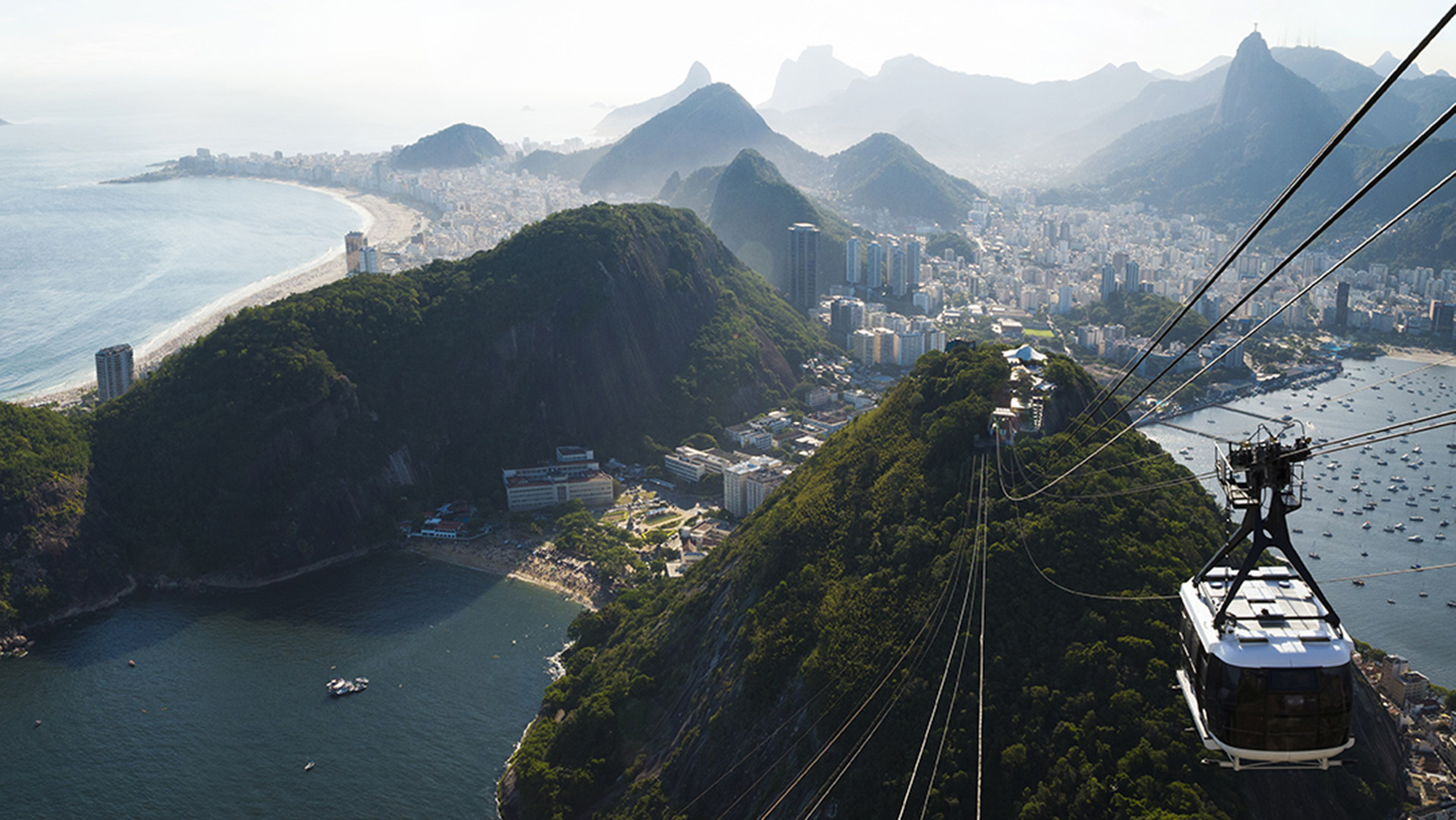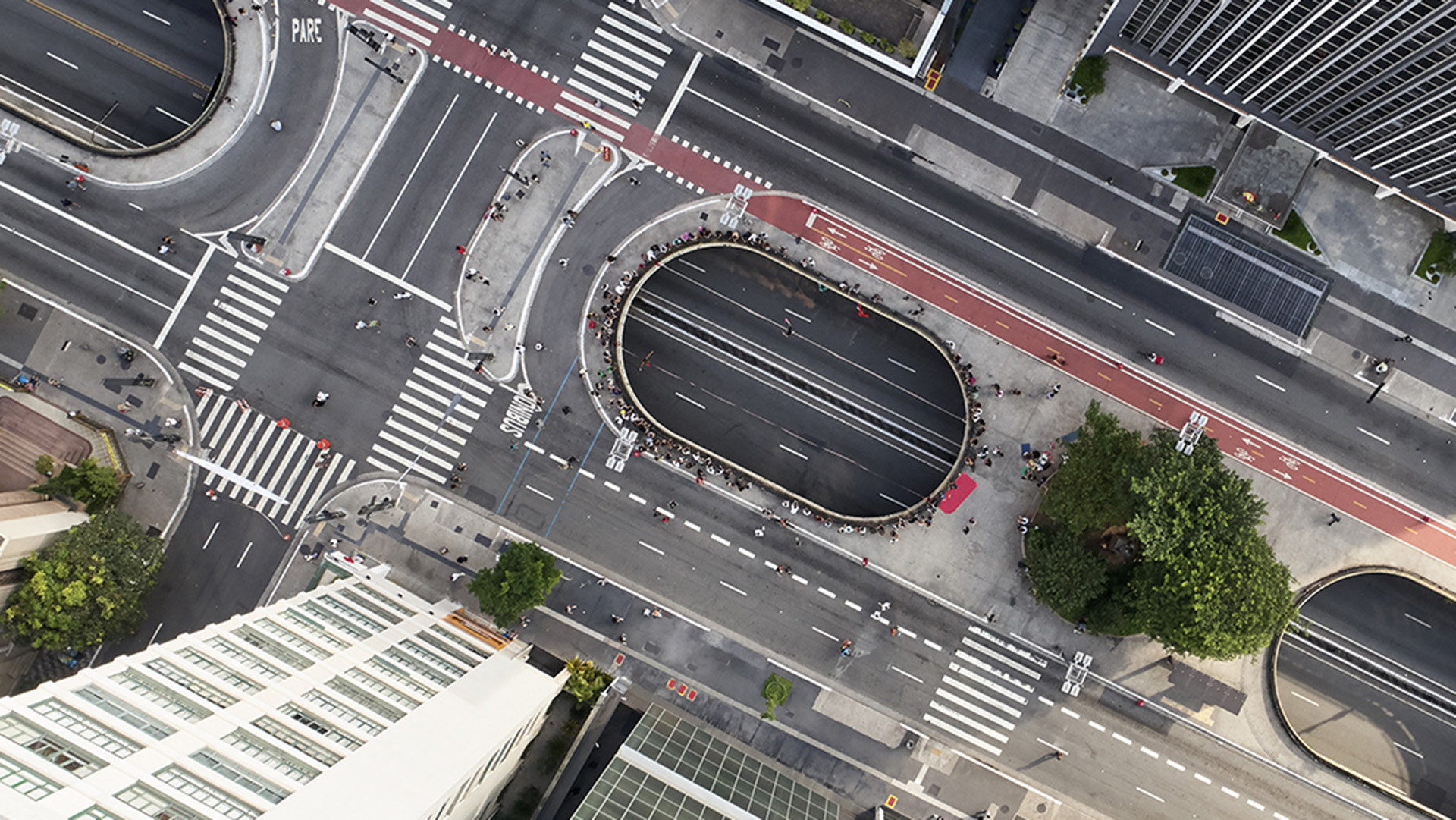
From Rio to São Paulo: Understanding the energy of Brazil
As South America’s largest and most densely populated country, Brazil is full of treasures waiting to be seen, experiences to be had, and a rhythm that needs to be felt to be truly understood. And the best place to start is in two of its most popular cities: Rio de Janeiro and São Paulo.
Rio de Janeiro: The heartbeat of Brazil
A city of contrasts, Rio de Janeiro is lodged between palm-fringed beaches and tropical mountains, home to world-class luxury hotels, and further outside the city; pousadas (family-run inns), offering the perfect blend of tranquility and excitement. Under the outstretched arms of Christ the Redeemer, the colossal statue sitting atop the Corcovado Mountain, visitors can immerse themselves in a city that has it all.
Rio’s beachfront offers sun-seekers an ideal place to relax and recharge. Its most iconic beach, Copacabana, boasts four kilometers worth of beachside kiosks, known for their Brazilian delicacies like Espetinhos de Queijo de Coalho (grilled cheese skewers), mate de Praia (Cold Brewed Tea), and classic caipirinhas (Brazil’s national cocktail). Beyond the shoreline, head to one of the many speakeasies that occupy the promenade. If you’re lucky, you can catch an impromptu music session, reminiscent of Brazil’s most defining music style of the ’50s and ’60s: bossa nova.
Within a short distance of the city are other, more secluded options. The golden sands of Joatinga are known as Rio’s answer to Beverly Hills, so enjoy a slice of understated glamor on this tiny beach. Time it right, however, as you can only access the bay during low tide and it’s entirely in shadow by the afternoon. At this point, there’s no better place to find a sense of peace and quiet than the heights of Rio. 364 meters above sea level, the Dona Marta Viewpoint offers one of the most beautiful and lesser-known views of the city.
Complete your day with an unforgettable cable car ride to the top of Sugarloaf Mountain (Pão de Açúcar) to enjoy the iconic panoramic views of the city and travel west to the mountain slopes of Tijuca National Park to explore one of the largest urban rainforests in the world. Don’t miss the Museu do Amanhã (Museum of Tomorrow) which, under a skeletal-like structure, displays a digital impression of the story of humankind – an eclectic mix of exhibition spaces that is not something to be missed.
Rio is full of life all year round but there’s one event that has become synonymous with the city: Carnival. Regarded as the biggest bloco (street party) in the world, over six million people take to the streets for five days of celebration in the Spring to coincide with Lent. As elaborate floats, colorful costumes, and drum-fueled music fill the streets, it’s near impossible not to get swept up in the swarm of samba dancers parading the Sambadrome – the epicenter of the festivities.
It won’t take long to discover why Rio was named the first urban cultural landscape ever inscribed on the World Heritage List.

São Paulo: A cultural reawakening
Roughly an hour’s flight from Rio de Janeiro is another global icon: São Paulo – one of the largest cities in the world and Brazil’s very own economic powerhouse. Unsurprisingly, it possesses a culture rich in art, architecture, and gastronomy, making it the ideal destination for both business and pleasure.
The street of Oscar Freire is an opportunity for visitors to immerse themselves in the luxury of city life, from extravagant shopping to unique high-end restaurants there is something for everyone. Discover Café Santo Grao, where you can enjoy freshly ground house coffee with breakfast or dinner, or visit Casa Bauducco, where the world-renowned Panettone bread and numerous other snack options will leave you wanting more. Don’t forget to visit the famous Havaianas superstore where you can personalize the brands sandals and t-shirts for a unique, custom souvenir.
Next Paulista Avenue offers the perfect detour to the heart of the city. Taking on a colonial, neo-gothic, and modernist architectural aesthetic, walking down the street is an experience in itself.
It is here that you’ll find MASP, the São Paulo Museum of Art. Suspended above the ground by four, bright-red pillars, the museum appears to passers-by as a floating structure. Inside, the zero-gravity illusion continues, with much of the art being presented in crystal easels and suspended in clear frames. Hanging in the middle of the gallery space, it encourages visitors to choose their own path around over 8,000 works of art. Innumerable paintings, sculptures, photographs, and costumes mean you could easily dedicate an entire day to this space.

A day trip to the city wouldn’t be complete without a walk through the Municipal Market. Nearly 300 stalls make up this lively food market, selling everything from fresh fruits and spices to meat and seafood. Take in the mouthwatering smells and awe-inspiring views of Brazilian food production, depicted through a series of seventy-two stained-glass windows – best enjoyed while you sample local favorites like the legendary mortadella sandwich.
São Paulo is home to two 2-star Michelin restaurants as well as hundreds of incredible gourmet chefs, diverse cuisines, and a wide assortment of fusion dining experiences. Given its proximity to the ocean and the incredible agricultural diversity farmed on the outskirts of the city, you can enjoy the catch of the day or a fresh cut of “picanha” combined with freshly picked organic fruits and vegetables.
Rio and São Paulo are just two of the biggest, most well-connected destinations in Brazil. Venturing further across this vibrant country will open an entirely new world of exploration.

